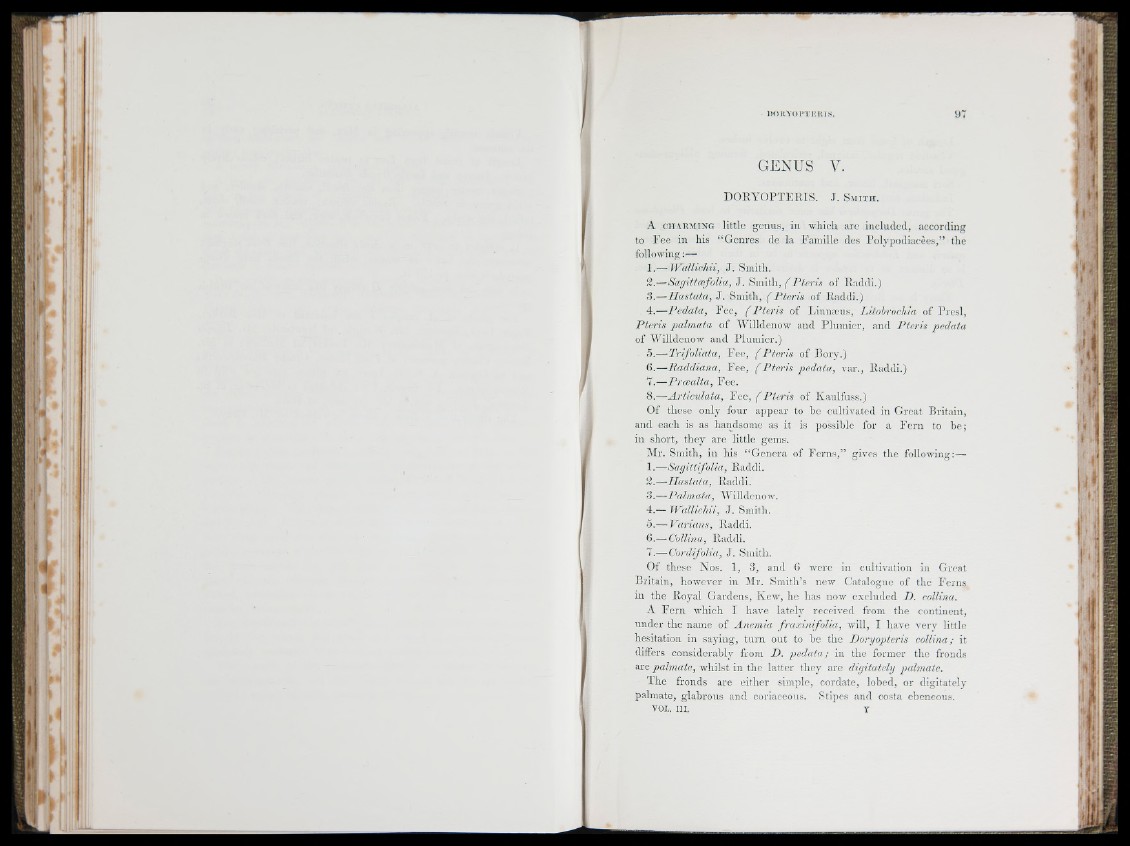
IKIRYOI'TKRIS.
( ÎE N U S Y.
D O llY O P T E R lS . J . S m i t h .
:
A CHARMING little gcnus, in wliicli arc included, according
to Fee in his “ Genres de la Famille des l ’olypodiacèes,” the
following:—
1.— W u n ich ii, J . Smith.
2.—SarjittcefoUa, J . Smith, (^7Vcr/,v of Raddi.)
3.—H a s ta ta , J . Smith, fP t e r i s of Raddi.)
4.—P ed a ta , Fee, (P te r is of Linnæus, Litolirorhla of Presl,
P te ris p a lm a ta of AYilldcnow aud Plum ie r, and P te ris pedata
of "Willdenow and Plumie r.)
5.— TrifoUata, Fee, f P te ris of llo ry .)
(i.—P ia d d ia n a , Fee, ( P te ris ped a ta , var., Raddi.)
T.— Prccalta, Fee.
8.—A rtic u la ta , Y c e , f P te r is of Kaulfuss.)
Of these only four appear to be cultivated in Great Britain,
and each is as handsome as it is possible for a F e rn to b e ;
in short, they are little gems.
Mr. Smith, in his “ Genera of F e rn s,” gives the following: —
1.— iSagittifotla, Raddi.
2.— Hasta ta , Raddi.
3.— Palmata, W'illdeuow.
4.— W allichii, J. Smith.
5.— P arians, Raddi.
6.— Collina, Raddi.
7.— Cordifolia, J . Smith.
Of these Nos. 1, 3, and G were in cultivation in Great
Britain, however in Air. Smith’s new Catalogue of the Ferns
in the Royal Gardens, Kew, he has now c x d u d c d I). roUina.
A F e rn which I have lately received from the continent,
under the name of A n em ia fra x in ifo lia , will, I have very little
hesitation in saying, tu rn out to be the Horijopteris collina; it
differs considerably fi'oin T). p ed a ta ; in the former the fronds
arc palma te , whilst in the latte r they are diyitatcly palmate.
The fronds are e ither simple, cordate, lobed, or digitatelv
palmate, glabrous and coriaceous. Stipes and costa ebeneous.
VOL. III. Y
t
':k
r i ,
, «I
>
l ì